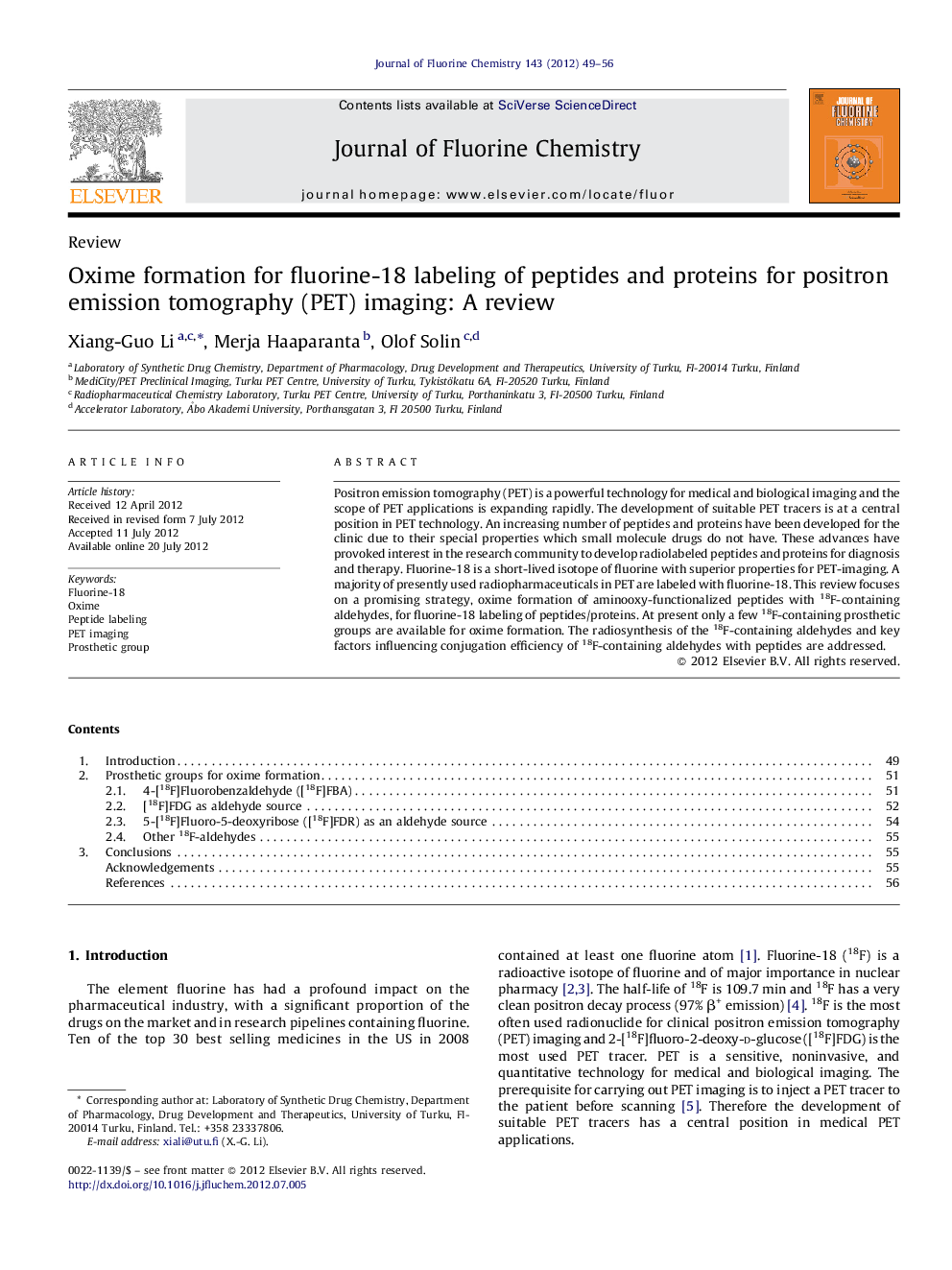| Article ID | Journal | Published Year | Pages | File Type |
|---|---|---|---|---|
| 1313897 | Journal of Fluorine Chemistry | 2012 | 8 Pages |
Positron emission tomography (PET) is a powerful technology for medical and biological imaging and the scope of PET applications is expanding rapidly. The development of suitable PET tracers is at a central position in PET technology. An increasing number of peptides and proteins have been developed for the clinic due to their special properties which small molecule drugs do not have. These advances have provoked interest in the research community to develop radiolabeled peptides and proteins for diagnosis and therapy. Fluorine-18 is a short-lived isotope of fluorine with superior properties for PET-imaging. A majority of presently used radiopharmaceuticals in PET are labeled with fluorine-18. This review focuses on a promising strategy, oxime formation of aminooxy-functionalized peptides with 18F-containing aldehydes, for fluorine-18 labeling of peptides/proteins. At present only a few 18F-containing prosthetic groups are available for oxime formation. The radiosynthesis of the 18F-containing aldehydes and key factors influencing conjugation efficiency of 18F-containing aldehydes with peptides are addressed.
Graphical abstractFigure optionsDownload full-size imageDownload as PowerPoint slideHighlights► Methods for 18F-labeling of peptides for PET imaging are reviewed. ► The focus is on 18F-aldehydes as prosthetic groups for peptide labeling. ► Oxime formation is considered as a robust, feasible and practical 18F-labeling method for preclinical and clinical applications.
